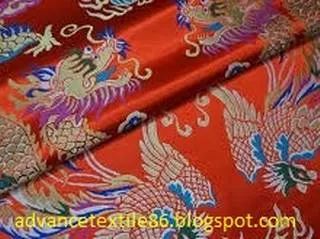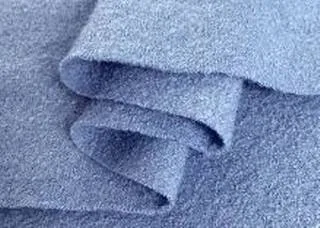7 Different types of fabric
Antique satin fabric
Antique satin fabric refers to any five or eight
harnesses with a satin weave fabric that uses slubbed or unevenly cut yarn
in the waft. It is the opposite of satin on one side and shantung on the other.
It is used to imitate 17th and 18th-century silks and garments like blouses,
underwear, and evening wear.
This heavy and dull fabric is sensitive to damage
from water and light. Therefore, the antique satin fabric must not be washed and should be
cleaned by a professional fabric specialist. The lining is also sewn into the
hem so if the lining is changed the fabric will be damaged. It is usually a
home-weighted fabric and can be made using silk, rayon, or acetate for warp and
coarse cotton or synthetic fiber for wefts. This is a satin-oriented version of
Shantung or Dupioni. The name refers to the handspun and hand-woven look of the
fabric.
Batik fabric
Batik fabric is an Indonesian technique of wax-resistant
dyeing that is applied to whole fabrics. This strategy originated from the
island of Java in Indonesia. It is produced by drawing points and lines of
resistance with a spotted tool named canning or by printing resistance with a
copper stamp named a hat. The applied wax resists with color and so allows the
artisan to dye the fabric in one color, remove the wax in boiling water, and
choose multiple colors but repeat and allow the artisan to color selectively.
Batik is an ancient art form made of fabric with wax-resistant dyes; Indonesian batik is best known. Indonesian batik made on the island of Java has a rich history of a variety of designs influenced by
different cultures and is the most developed in terms of quality of patterns,
techniques, and craftsmanship.
Boiled wool fabric
Boiled wool fabric is a kind of wool fabric, and it feels like
woven wool. These processes are at least as backward as the middle Ages. The
word is thought to come from West Germanic feltaz. Boiled/felted wool featuring
traditional textile fabrics of South America and Tyrolian Austria. It is
manufactured in industries around the world. Boiled wool fabric is a type of fabric
that is mainly used to make berets, scarves, vests, cardigans, coats, and
jackets. To make this fabric, woven or wool blended fabrics are stirred with
hot water in a process called full water. This process shrinks the fabric and
results in a thicker felt fabric to resist further shrinkage. This boiled wool fabric is warm, durable and resistant to water and wind. The general process of
felting can be used to process non-woven fibers into felt pieces used for
industrial, medical applications and crafts, and clothing. This can be
accomplished using a variety of fibers, including wool blends, rayon, polyester,
and acrylic.
Brocade fabric
A class of brocade-rich ornamental shuttle woven
cloths is often made of colored silk and with or without gold and silver yarns.
Brocade fabric is usually woven in a drum. It is produced by complementary weaving
methods, i.e., decorative brocading moderate, non-structured, wefts that hold
the wrapping threads together in addition to the standard weaves. The purpose
is to make the loom look like it was embroidered. Brocade is the very familiar
method for arranging woven fabrics of Maya weavers in back strap looms.
Brocade fabric emphasizes ornamental features and serves as
an addition to the main fabric, sometimes making it stiffer although it often
creates a less relaxing effect on the face. In some, but not all, brocades,
these additions present a distinct presence behind the elements where the
complementary knitting or floating threads of the brocade or brooched parts
hang or fall off in a loose group.
Chiffon fabric
Chiffon fabric is a lightweight, well-balanced plain-woven
fabric or gauze, such as gauze, alternative S- and Z-twist crepe (high-twist)
yarn. The twist in the crepe yarns gives it a slightly stretched and somewhat
rough feeling. Early chiffon fabric was produced from pure silk, not others.
Chiffon fabric is mainly used in evening wear, especially for
overlay, to give the gown an elegant and floating look. It is a popular fabric
used in blouses, ribbons, scarves, and underwear. Like other crop fabrics,
chiffon fabric is difficult to work with due to its light and slippery texture.
Because of this delicate nature, the chiffon fabric needs to be washed very slowly.
Corduroy fabric
Corduroy fabric is a textile with a distinctive pattern,
cord, or wale. Modern chords are mostly composed of tufts of cord, sometimes
displaying a channel between tufts. Velvet and corduroy fabric both are derived
from fustian fabric. The fabric looks like it is made from multiple ropes
stretched parallel to each other and then sewn together. The word corduroy is a
false derivation from the word cord and Duroy, a coarse woolen cloth made in
England in the 18th century.
Corduroy fabric is considered a durable fabric. Corduroy fabric is
available for making trousers, jackets, and shirts. The width of the cord is
usually referred to as the size of the wale. The calculation of the corduroy
wells per inch may vary from 1.5 to 21, although the traditional value falls
between 10 and 12. Medium, thin, and delicate wale fabrics are commonly found
in garments worn above the waist.
Canvas fabric
Canvas fabric is a highly stable flat woven fabric that
requires cases and shoes in fashion items like marquees, backpacks, sails,
tents, oil painting shelters, and other items as well as handbags, electronic
devices. It is commonly used by artists as a painting surface, generally
extending across a wooden frame.
Modern canvas fabric is usually made of cotton or linen
with polyvinyl chloride, although historically it was made from flax. It
differs from other heavy cotton fabrics, such as denim, as plain wave instead
of double weave. Canvas fabric is mainly two types plain and duck.















0 Comments